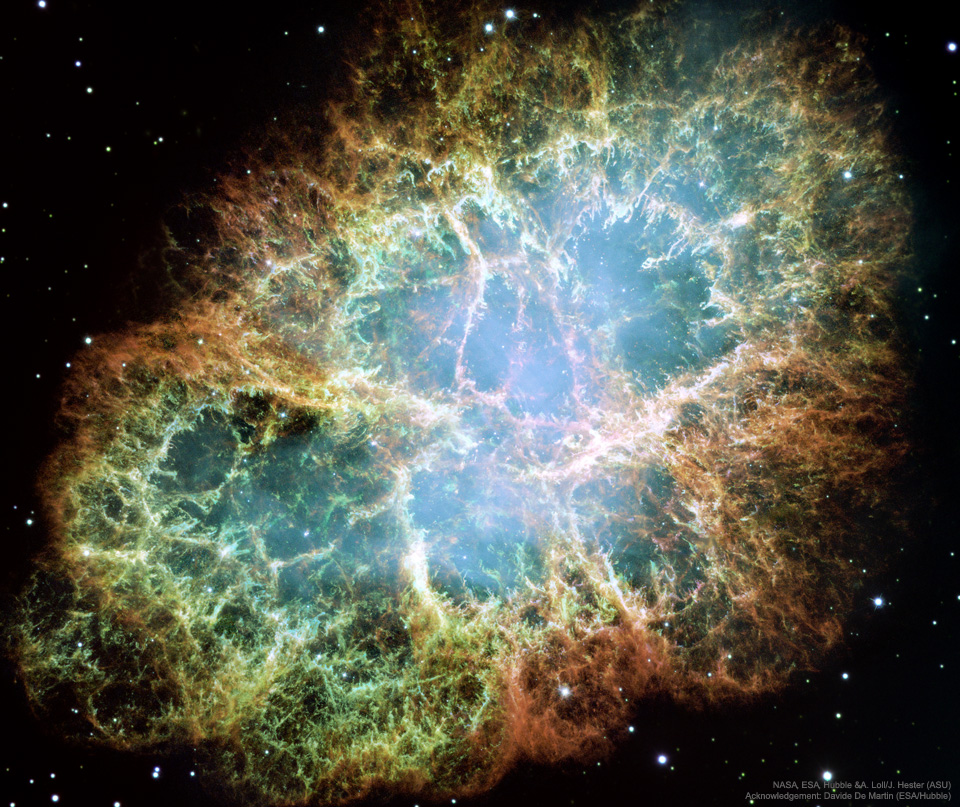2023年1月15日
M1: The Crab Nebula from Hubble
Image Credit: NASA, ESA, Hubble, J. Hester, A. Loll (ASU)
Explanation: This is the mess that is left when a star explodes. The Crab Nebula, the result of a supernova seen in 1054 AD, is filled with mysterious filaments. The filaments are not only tremendously complex, but appear to have less mass than expelled in the original supernova and a higher speed than expected from a free explosion. The featured image, taken by the Hubble Space Telescope, is presented in three colors chosen for scientific interest. The Crab Nebula spans about 10 light-years. In the nebula’s very center lies a pulsar: a neutron star as massive as the Sun but with only the size of a small town. The Crab Pulsar rotates about 30 times each second.
Discovery + Outreach: Graduate student research position open for APOD
Tomorrow’s picture: Moon, enhanced
M1: 哈勃望远镜的蟹状星云
图像提供: NASA, ESA, Hubble, J. Hester, A. Loll (ASU)
说明: 这是恒星爆炸后留下的零乱碎片云。蟹状星云是公元1054年(北宋至和元年)超新星的遗迹,它的内部到处都是谜样的云气丝。这些丝状物不仅极其复杂,质量也看似少于超新星初始所释出的,而且扩张速度也高于自由爆炸所应具有的。上面这幅主题图像,是由哈伯太空望远镜所拍摄,组成图像的三颜色之选择,则是基于科学目的。蟹状星云的大小约为10光年,星云的正中心藏着一颗波霎,其本质为一颗质量和太阳相当的中子星,大小则和小城镇相当。蟹状星云波霎每秒大约自转30次。
探索+拓展: APOD研究生研究职位空缺
明日的图片: Moon, enhanced



